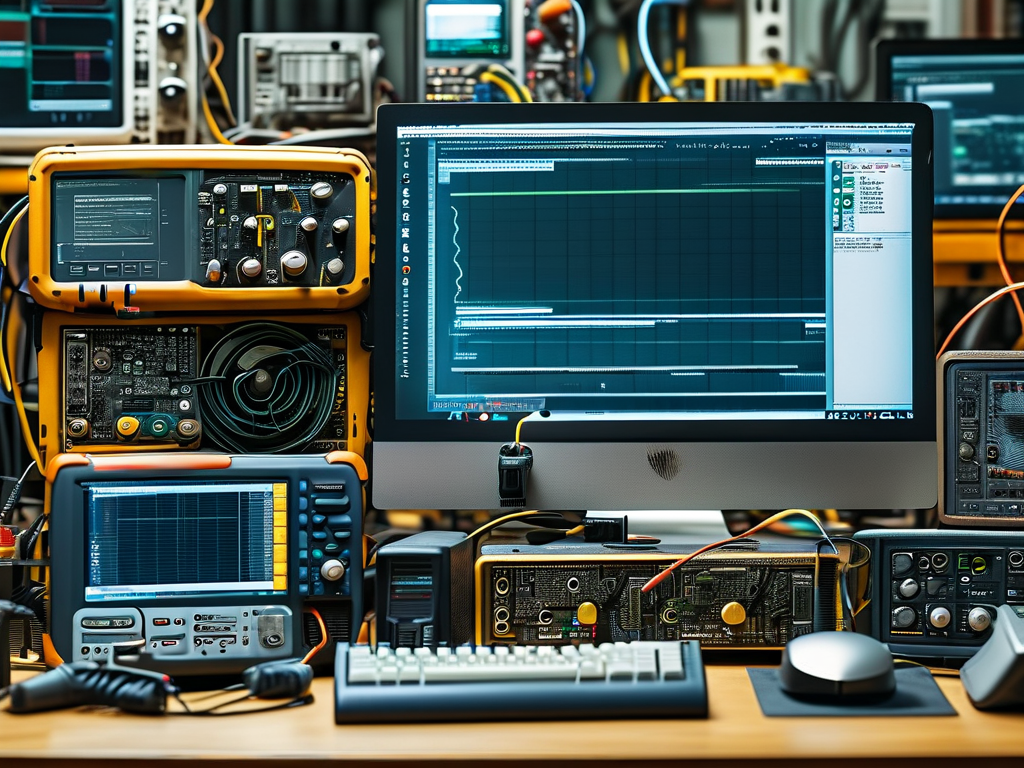In the fast-paced world of embedded systems engineering, the physical workspace often plays an underestimated role in project success. A well-designed embedded development tools desk serves as the nerve center for hardware debugging, firmware coding, and system integration. Unlike generic office setups, these specialized workstations address the unique demands of microcontroller programming and circuit analysis while maintaining ergonomic efficiency.
The modern embedded development desk integrates three critical layers: hardware interfacing, software integration, and documentation management. At its core lies a modular power distribution system supporting multiple voltage rails (3.3V, 5V, 12V) with overcurrent protection – a fundamental requirement when prototyping IoT devices or industrial controllers. Seasoned developers often customize their desks with magnetic tool strips for quick access to oscilloscope probes and precision screwdrivers, creating a tactile environment that mirrors the hybrid nature of embedded work.
Cable management proves particularly crucial in these setups. A typical embedded workstation might handle:
USB-C -> JTAG debugger
Ethernet -> Target board
HDMI -> Logic analyzer display This demands intelligent routing solutions like overhead cable trays or under-desk raceways to prevent tangling during rapid device switching. Some advanced desks incorporate built-in signal integrity test points, allowing engineers to validate PCB designs without leaving their primary work area.
Software configuration forms another pillar of effective workspace design. Dual monitor arms with VESA mounts enable side-by-side viewing of datasheets and integrated development environments (IDE). Mechanical keyboard trays with negative tilt reduce wrist strain during marathon coding sessions, while USB-C docking stations with Thunderbolt support ensure seamless connectivity across prototyping tools.
The psychological impact of workspace organization shouldn’t be overlooked. A 2022 study by the Embedded Systems Institute revealed that engineers using purpose-built development desks completed debugging tasks 23% faster than those with conventional setups. This efficiency boost stems from reduced context switching – having all necessary tools within arm’s reach minimizes cognitive load during complex problem-solving.
Environmental factors also play a role. Anti-static mats grounded through desk-mounted terminals protect sensitive components, while adjustable LED task lighting with color temperature control helps maintain focus during extended work periods. Some manufacturers now offer desks with integrated thermal cameras for real-time heat distribution analysis – a valuable feature when optimizing power consumption in edge computing devices.
The evolution of wireless technologies has introduced new workspace considerations. Bluetooth-enabled desk peripherals reduce cable clutter but require careful RF interference management. Advanced users often partition their desks into zones: a shielded area for RF-sensitive operations and an open space for general development tasks. This spatial separation mirrors the compartmentalized nature of embedded systems architecture itself.
For team-based environments, modular desk configurations enable collaborative debugging sessions. Stackable workstations with shared power and network backplanes allow multiple engineers to interface with a single prototype while maintaining individual workspace autonomy. This setup proves particularly effective in Agile development cycles where hardware and software teams must synchronize their efforts.
The financial justification for specialized embedded desks becomes clear when analyzing project timelines. While premium models may cost 2-3× more than standard office furniture, the ROI manifests through reduced equipment damage (from better organization) and faster iteration cycles. Many engineering firms now treat workspace design as a strategic investment rather than an overhead expense.

As embedded systems grow more complex – particularly with the rise of AIoT (AI-enabled IoT) – workspace requirements will continue evolving. Future development desks may incorporate augmented reality interfaces for 3D circuit visualization or automated component dispensers for rapid prototyping. What remains constant is the fundamental truth: in embedded engineering, the quality of the physical workspace directly influences the quality of the digital solutions created within it.




